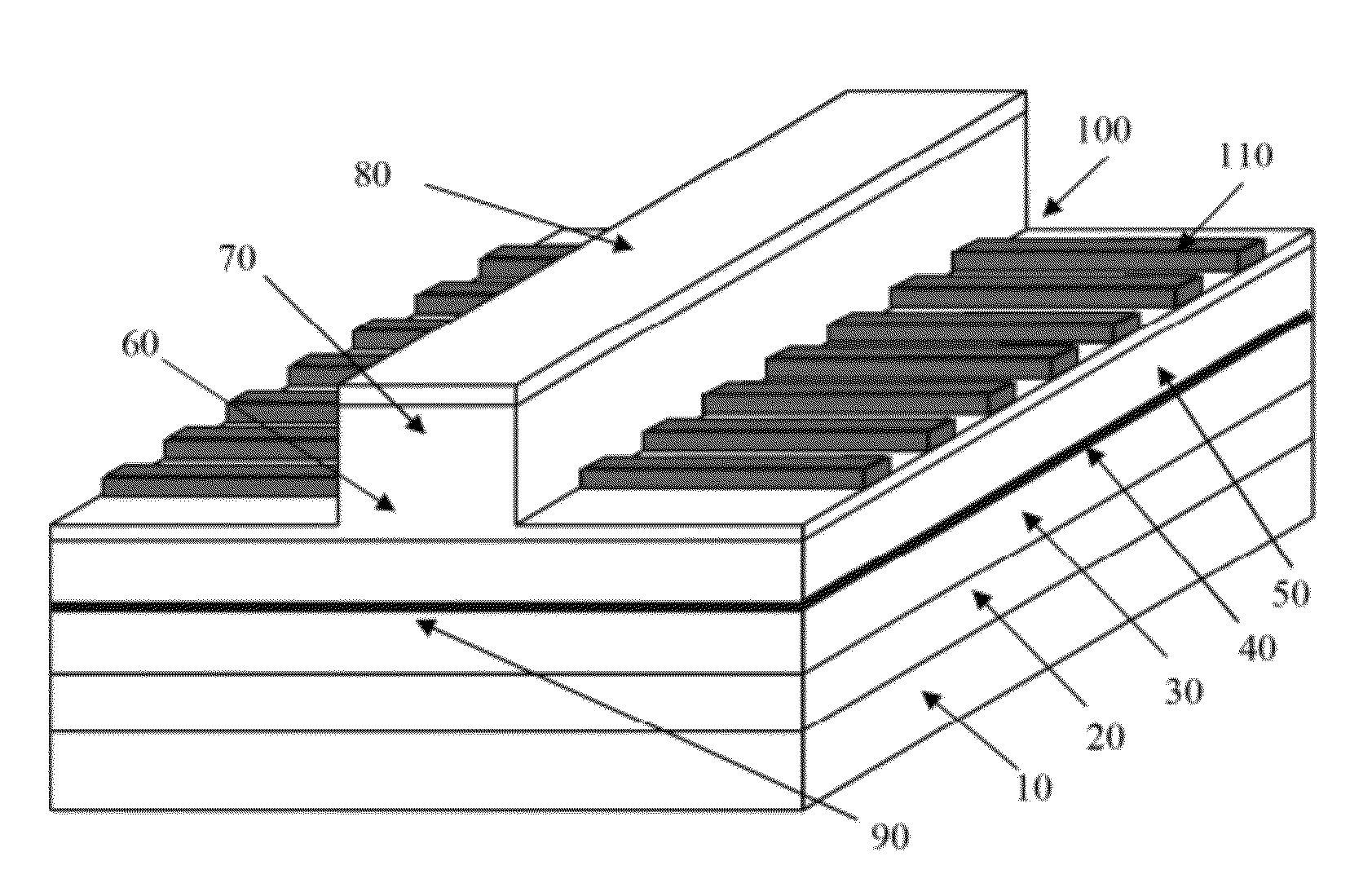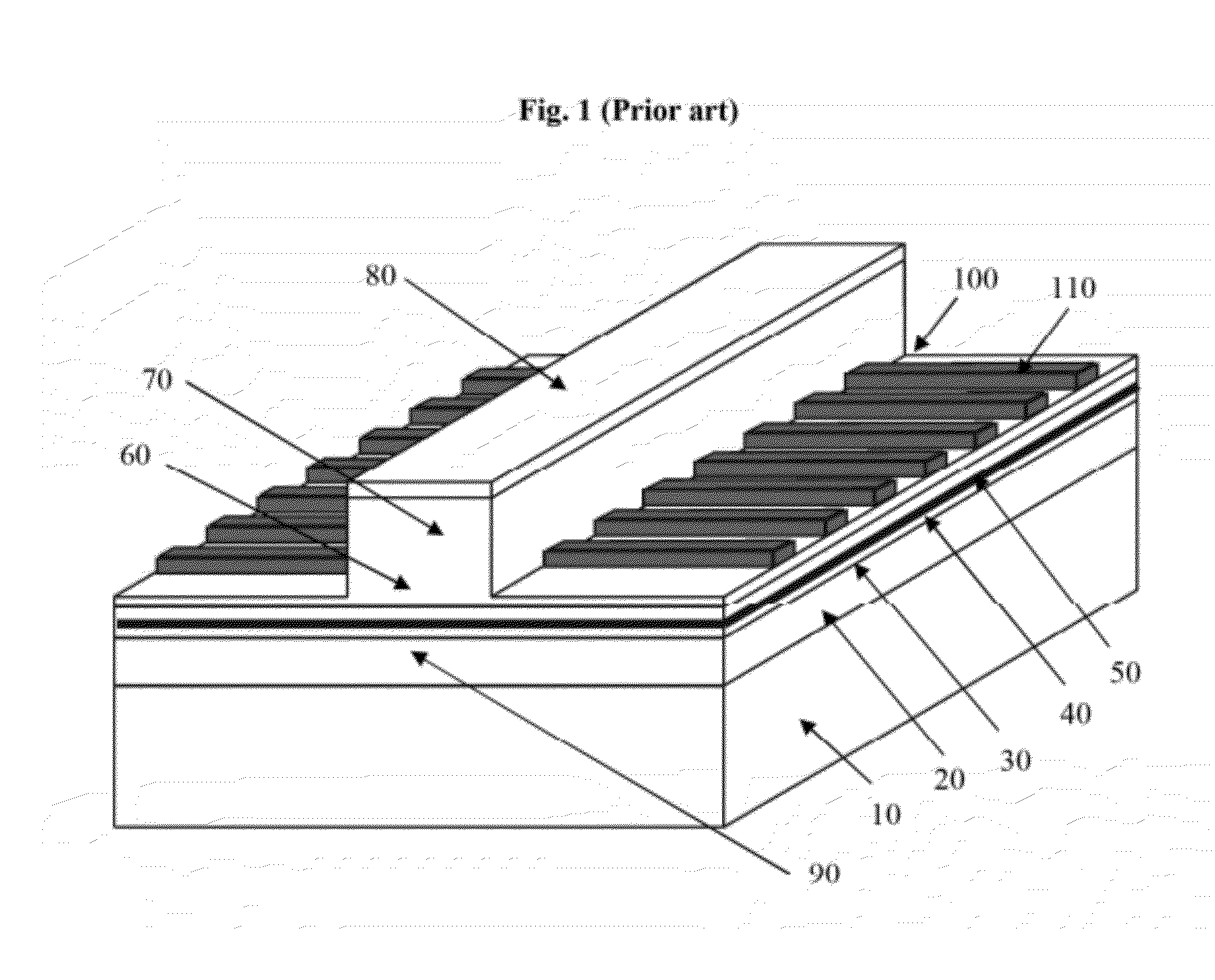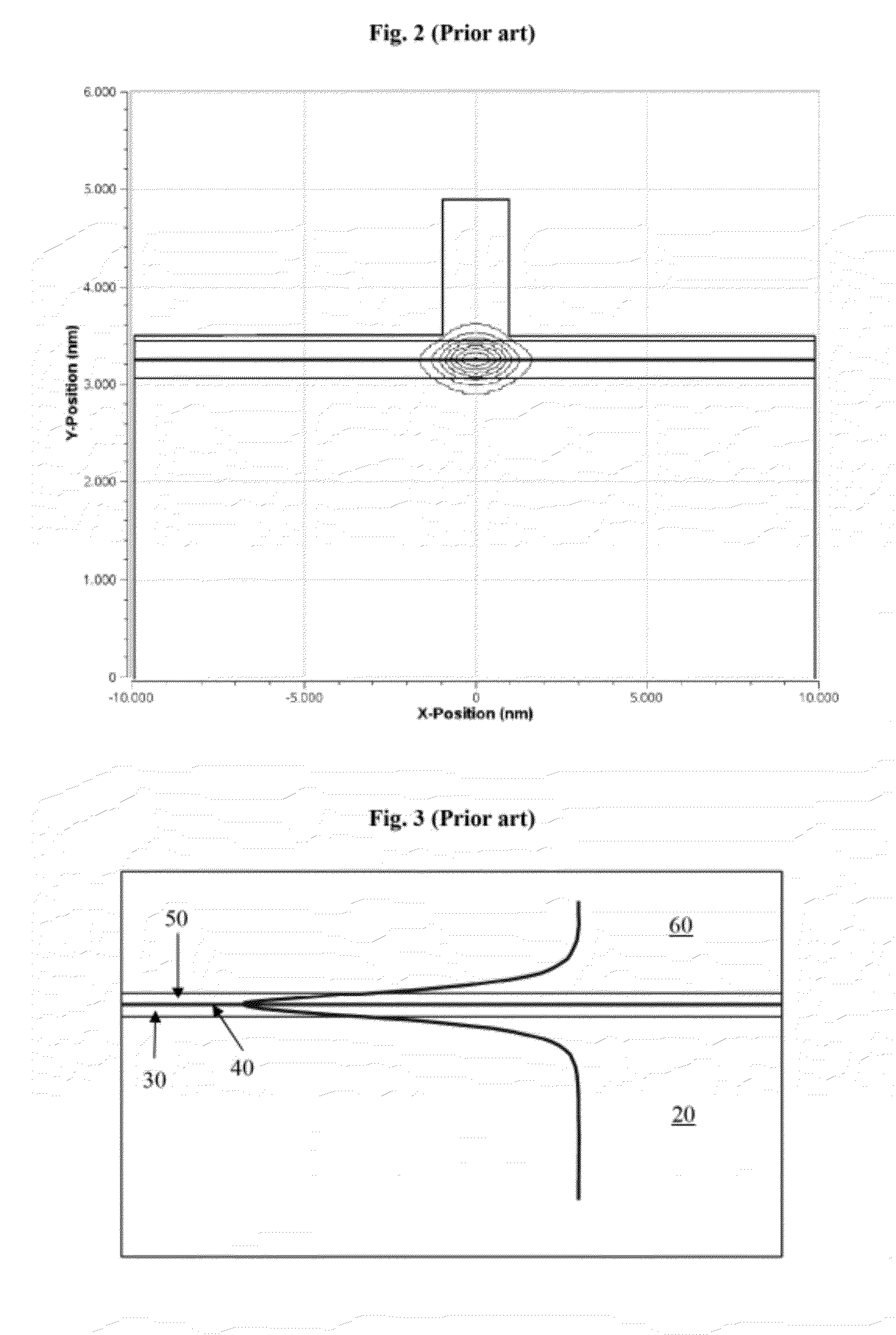DFB Laser Diode Having a Lateral Coupling for Large Output Power
a laser diode and lateral coupling technology, which is applied in the direction of lasers, electrical equipment, laser details, etc., can solve the problems of affecting the quality of the layers that form the laser diode, the coupling constant is reduced, and the production process is complex, so as to reduce the maximum intensity density, reduce the coupling constant, and reduce the quality of other parameters
- Summary
- Abstract
- Description
- Claims
- Application Information
AI Technical Summary
Benefits of technology
Problems solved by technology
Method used
Image
Examples
Embodiment Construction
[0067]In the following, preferred embodiments of the apparatuses according to the present invention are described in more detail.
[0068]FIG. 1 schematically illustrates the most important layers that represent a DFB laser diode having a lateral coupling. The different layers are deposited on a semiconductor substrate 10 using an epitaxial process. The material system of semiconductor substrate 10 is defined by the desired wave length of the laser diode. The principles underlying the present invention that are explained in detail in the following, can be applied to all known material systems in order to manufacture laser diodes that emit light from the blue (e.g., gallium nitride substrates) to the deep infrared wave length range (e.g., based on gallium antimonide substrates). Besides substrates on the basis of III / V compound semiconductors, the disclosed principles can also be applied to DFB laser diodes with lateral coupling that are based on II / VI semiconductor substrates or other ...
PUM
 Login to View More
Login to View More Abstract
Description
Claims
Application Information
 Login to View More
Login to View More - R&D
- Intellectual Property
- Life Sciences
- Materials
- Tech Scout
- Unparalleled Data Quality
- Higher Quality Content
- 60% Fewer Hallucinations
Browse by: Latest US Patents, China's latest patents, Technical Efficacy Thesaurus, Application Domain, Technology Topic, Popular Technical Reports.
© 2025 PatSnap. All rights reserved.Legal|Privacy policy|Modern Slavery Act Transparency Statement|Sitemap|About US| Contact US: help@patsnap.com



